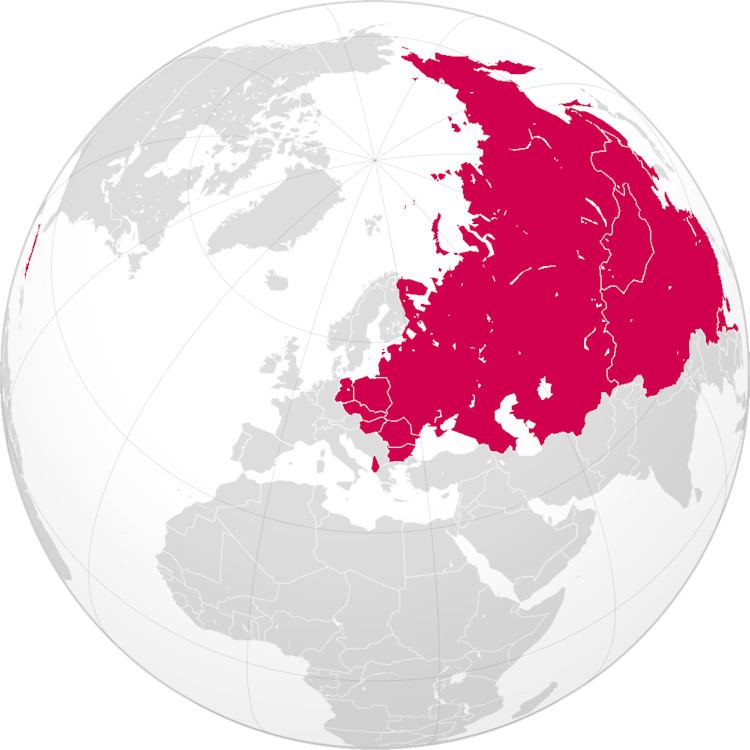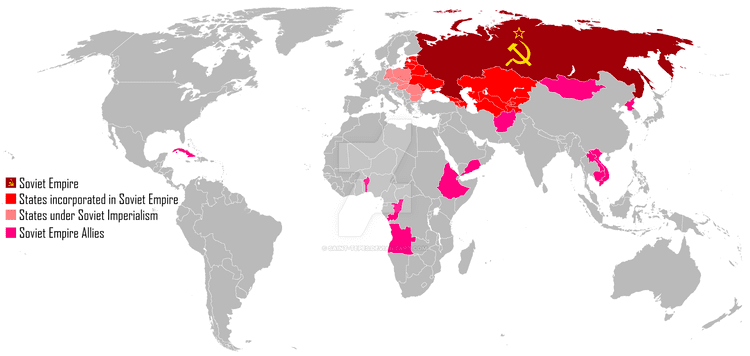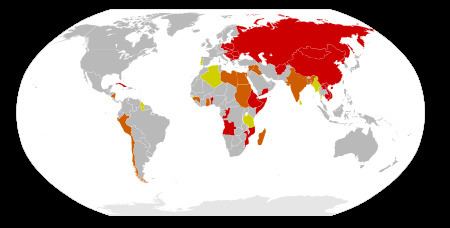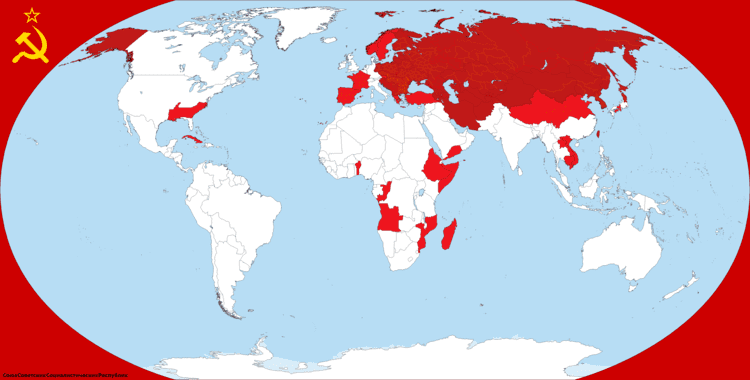 | ||
The real story behind the soviet empire s shocking collapse part i
The informal term "Soviet Empire" is used by critics of the Soviet Union and Russian nationalists to refer to that country's perceived imperialist foreign policy during the Cold War. The nations said to be part of the "Soviet Empire" were officially independent countries with separate governments that set their own policies (to a greater or lesser extent, depending on the country), but those policies had to remain within certain limits decided by the Soviet Union and enforced by threat of intervention by the Warsaw Pact (Hungary 1956, Czechoslovakia 1968, Poland 1980). Countries in this situation are often called satellite states.
Contents
- The real story behind the soviet empire s shocking collapse part i
- The collapse of soviet empire 1
- Characteristics
- Influence
- The Soviet Union its allies and its satellite states
- Soviet involvement in the Third World
- Communist states opposed to the Soviet Union
- References

The collapse of soviet empire 1
Characteristics

Though the Soviet Union was not ruled by an emperor and declared itself anti-imperialist and a people's democracy, critics argue that it exhibited tendencies common to historic empires. Some scholars hold that the Soviet Union was a hybrid entity containing elements common to both multinational empires and nation states. It has also been argued that the USSR practiced colonialism as did other imperial powers, Maoists argued that the Soviet Union had itself become an imperialist power while maintaining a socialist façade.

The other dimension of "Soviet imperialism" is cultural imperialism. The policy of Soviet cultural imperialism implied the Sovietization of culture and education at the expense of local traditions.

Overall, the Soviet Empire was a political-military construct. Its hub, Russia, was hardly a colonial state in the classical sense, which exploited its colonies' natural resources. The economies of various parts were both diversified and interrelated, frequently specialising in one type of production and fully dependent on others in both the supply and demand chains. For example, while Uzbek SSR may have been viewed as a typical example of a monoculture country producing cotton, its capital, Tashkent has become a major industrial centre, and Russia itself was a major supplier of raw materials for all its "colonies". In cases where political control wasn't yet firmly established, the satellite states were economically exploited at full scale, as it happened in post-war Poland and Baltic states.

The penetration of the Soviet influence into the "socialist-leaning countries" was also of the political and ideological kind: rather than getting hold on their economic riches, the Soviet Union pumped enormous amounts of "internatiossnal assistance" into them in order to secure influence, eventually to the detriment of its own economy. After the dissolution of the Soviet Union, when Russia declared itself successor, it recognized $103 billion of Soviet foreign debt, while claiming $140 billion of Soviet assets abroad.
Part of contemporary Russian nationalism considers the USSR to be a continuation of the Russian Empire and thus considers geographical and political expansion of the Soviet Union as continuation and further achievement of the Russian ethnos.. The soviet empire took place in Russia °§
Influence
The Soviet Empire is considered to have included the following:
The Soviet Union, its allies, and its satellite states
These countries were the closest allies of the Soviet Union. They were members of the Comecon, a Soviet-led economic community founded in 1949. In addition, the ones located in Eastern Europe were also members of the Warsaw Pact. They were sometimes called the Eastern bloc in English and were widely viewed as Soviet satellite states.
North Korea was a Soviet ally, but always followed a highly isolationist foreign policy and therefore it did not join the Comecon or any other international organization of communist states.
Soviet involvement in the Third World
Some countries in the Third World had pro-Soviet governments during the Cold War. In the political terminology of the Soviet Union, these were "countries moving along the socialist road of development", as opposed to the more advanced "countries of developed socialism", which were mostly located in Eastern Europe, but also included Vietnam and Cuba. Most received some aid, either military or economic, from the Soviet Union, and were influenced by it to varying degrees. Sometimes, their support for the Soviet Union eventually stopped, for various reasons; in some cases the pro-Soviet government lost power, in other cases the pro-Soviet forces were overthrown by military coups promoted by the United States (such as in Chile), in some cases the pro-Soviet forces gained power by military aid from the Soviet Union (such as in Vietnam), while in other cases the same government remained in power but ended its alliance with the Soviet Union.
Some of these countries were not communist states. They are marked in italic.
Communist states opposed to the Soviet Union
Some communist states were openly opposed to the Soviet Union and many of its policies. Though their forms of government may have been similar, they were completely sovereign from the USSR and held only formal ties. Relations were often tense, sometimes even to the point of armed conflict.
